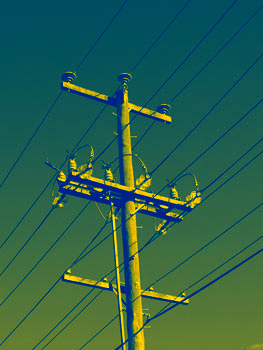WA takes up power cuts
 The WA Government is taking on the recommendations of a wide-ranging review into its power system.
The WA Government is taking on the recommendations of a wide-ranging review into its power system.
WA Energy Minister Mike Nahan said changes to the reserve capacity system, which is designed to help meet peak power demands, will be made to drive down the cost of production by $500 million.
The changes will see power plants closed and payments to peak power stations cut.
There will also be less money for so-called demand-side management providers.
Dr Nahan said these changes alone would see power-generating costs cut by $130 million a year.
The review is part of a three-year effort to overhaul the state's electricity system by reducing costs at the state-owned enterprises Synergy, Horizon Power and Western Power.
“We have driven efficiencies in those that when fully enforced are planned to reduce costs in those businesses to the tune of $500 million,” he said.
“That translates into reductions in costs of $500 per household per year.”
But those savings will not reach consumers.
Dr Nahan said savings went to cutting the Government’s own costs.
“To be honest, Synergy's savings have gone, to a large extent just to reduce the subsidy,” he said.
“We have cut the subsidy by more than $900 million over four years.
“Western Power has just started and Horizon has achieved savings of over $100 million already.”
Demand-side management (DSM) providers will be the hardest-hit, despite volunteering to constrain their power use on peak days.
“Currently DSM [providers] are paid around $120,000 per megawatt,” Dr Nahan said.
“We will reduce that to around $17,000 a megawatt. And we're doing that to represent the cost.”
DSM providers have seen the writing on the wall, and have been running campaign against the changes for some time.
They argue that the Government should spend money to get organisations not to use power, rather than paying power stations for supply that is not needed.
Dr Nahan rejects that argument.
“We're doing that to represent the cost. If you build a power station, you've got to spend $300 to $400 million,” he said.
“If you offer DSM you don't have to spend any money at all.”
The shift in capacity payments will cut about another 250 megawatts of excess capacity from the DSM system.
The Government has paid $430 million to DSM providers for 106 hours of reduced power use in the last decade.
The decision has added to uncertainty about the future of coal mining in the town of Collie.
Residents are worried the local economy could be decimated by reductions in its key industry.
Dr Nahan says “downward pressure” on the demand for coal-fired power over the next decade will be increased.
He said the Muja C and D plants would probably not be upgraded when they reach the end of their service life.
Labor Member for Collie, Mick Murray, was scathing of the Government's plan.
“I'm shocked. I'm absolutely shocked. He hasn't been down to speak to our community at all and has done it through the press. What a gutless wonder he's turned out to be,” he said.
“Now to be quite honest, he's p***** the money up against the wall by spending $300 million on the Muja A and B, now he wants to shut it down.”







 Print
Print